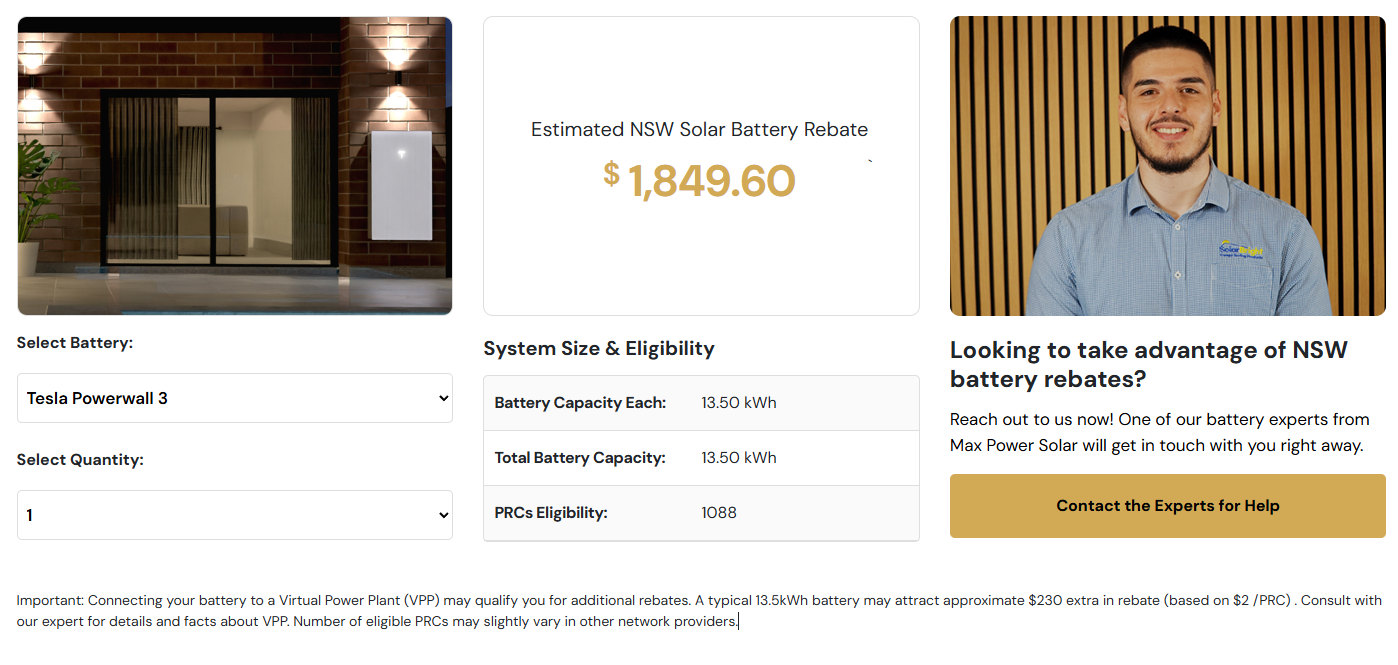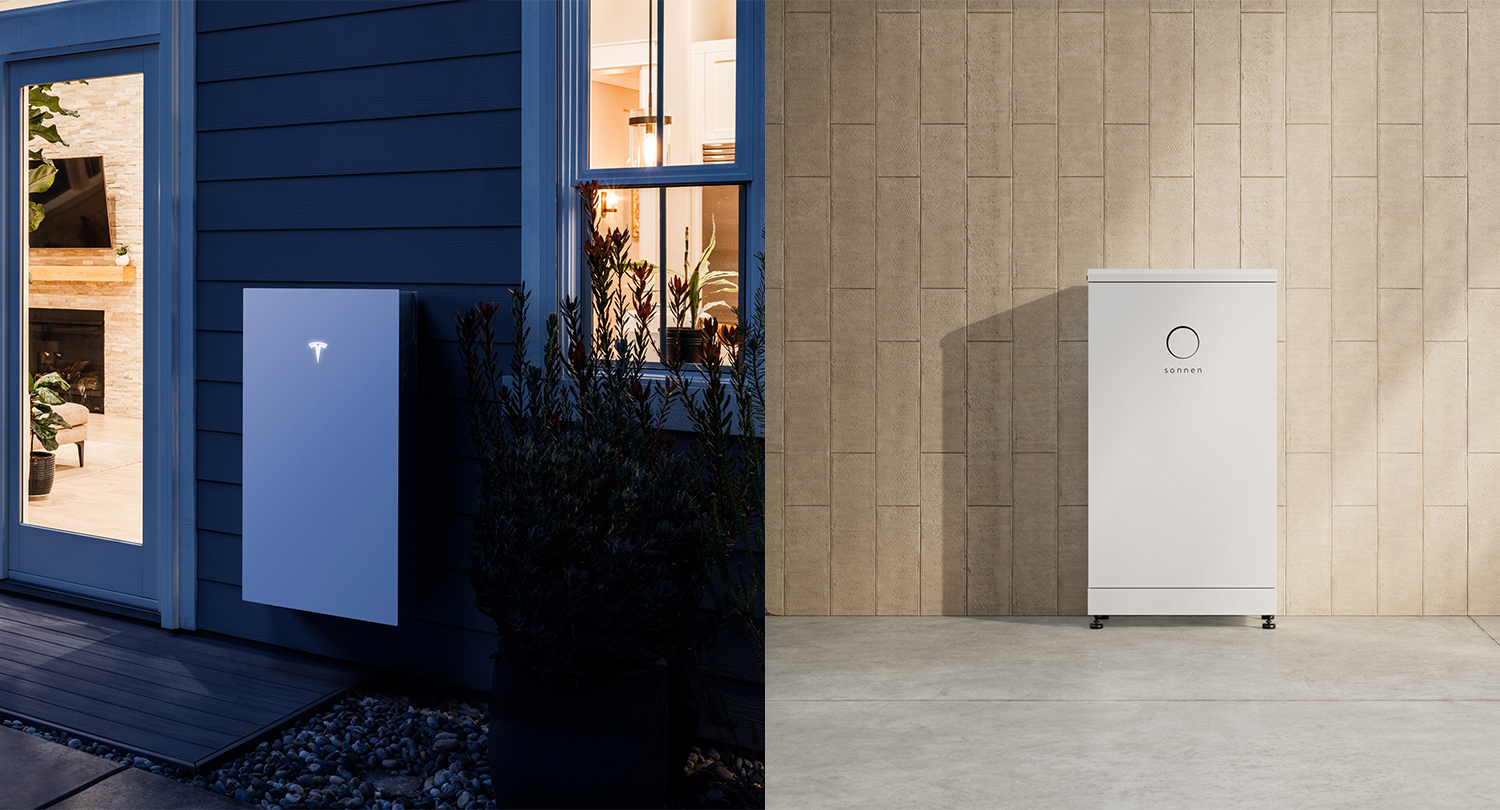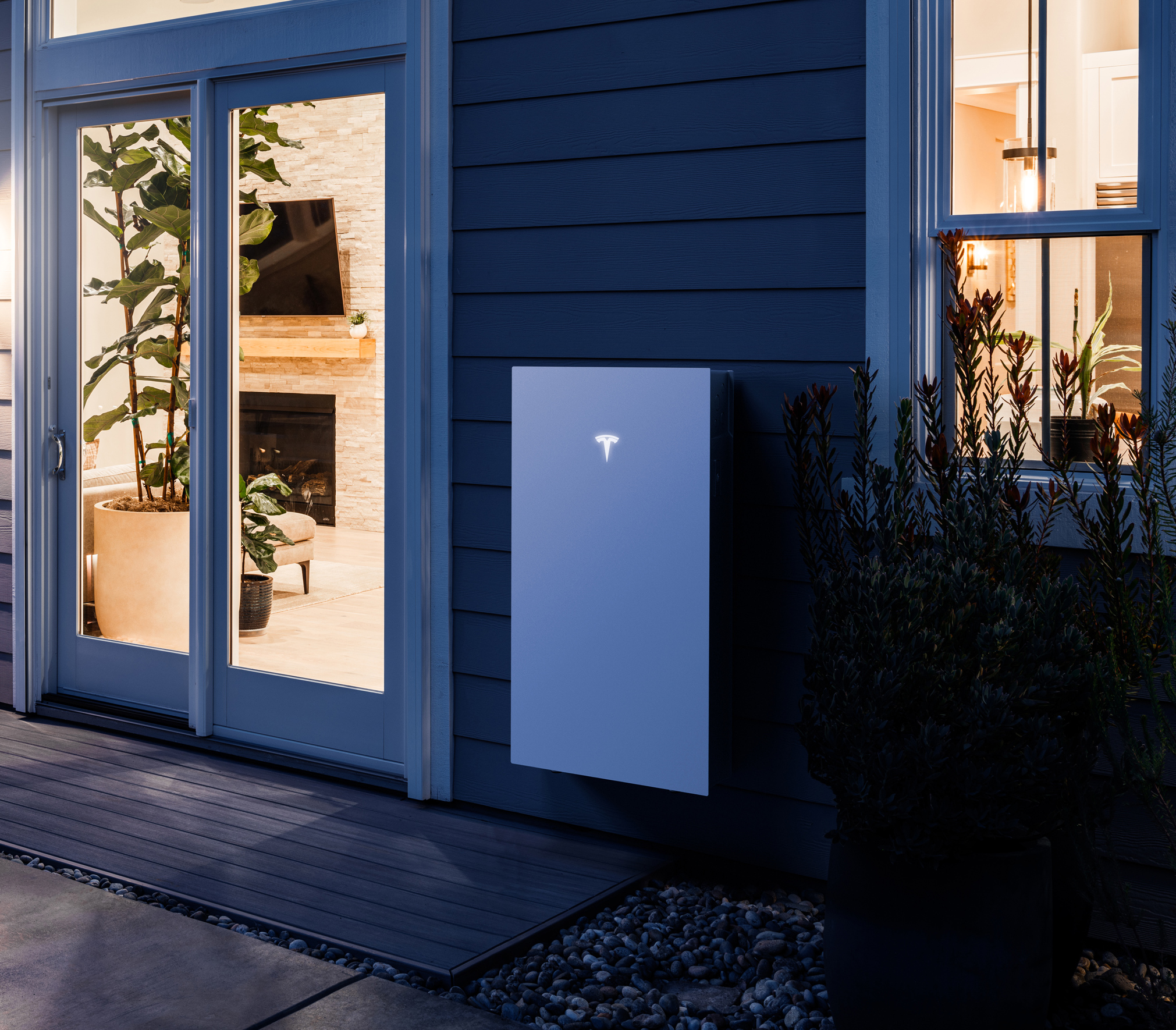Federal and NSW Solar Battery Rebates
As more Australians choose to add solar batteries to their homes, new financial incentives are making them more affordable and accessible. There are various rebates and subsidies available from both state and federal governments. And if you’re lucky enough to live in NSW, it’s currently the cheapest place in the world to buy a solar battery.
Here we’ll look at what solar battery rebates are currently available to NSW customers, as well as the rebates coming into effect mid-2025. With these rebates up your sleeve, you’ll be able to take full advantage of all the government solar battery rebates on offer.
NSW Battery Rebate

The NSW government launched the Peak Demand Reduction Scheme (PDRS) in November 2024. The PDRS was designed to ease pressure on the electricity grid during peak times, making the grid more stable and reliable. Here’s how the NSW solar battery rebate works:
- Installing a solar battery earns Peak Reduction Certificates (PRCs).
- PRCs are calculated based on the battery’s storage capacity.
- The market value of PRCs fluctuates, with the price currently sitting around $1.70 in May 2025.
- Like STCs, PRCs are applied as a point-of-sale discount by the installer, based on the battery size, and is deducted from the quote.
Under the NSW battery rebate you get upfront savings while the supplier submits the paperwork for the PRCs to be processed and paid.
Discover how much you could save with our NSW Rebate Calculator!
Federal Solar Battery Rebate

Leading up to the 2025 federal election, the Labor Government promised Australians a new home battery subsidy. This $2.3 billion solar battery rebate is modelled on the already successful Small-Scale Renewable Energy Scheme and funded by the federal government. This is what the federal battery rebate will look like:
- The federal solar battery rebate applies to new and existing solar systems that include a battery.
- The rebate is proposed to start at the beginning of the financial year on the 1st of July 2025.
- The scheme has been designed so that batteries purchased and installed before that date will still be eligible when they’re “switched on” on July 1.
- The federal battery rebate is projected to save households with existing solar systems up to $1,100 off their electricity bills each year, and up to $2,300 for new solar battery installs.
- The rebate is calculated using the size of the battery and are applied up to 50kW/h.
- The rebate won’t be means-tested, meaning households, businesses and community facilities can expect to see a 30% discount on batteries.
And just when you think it can’t get better, the federal battery rebate can be used in combination with any other state or council rebates – pending NSW Government approval for stacking the PRC (NSW) rebate with the STC (Federal) battery rebate. With STCs, PRCs and now this home battery subsidy, owners of solar panels and batteries in NSW will be saving thousands of dollars.
Discover how much you could save with our Federal Rebate Calculator!
Existing Solar Rebates

If you already have solar, you’re probably familiar with Small Technology Certificates (STCs). The government has been issuing them since 2011 through the Small-scale Renewable Energy Scheme (SRES). They’ve been a cornerstone of the solar industry for over a decade. Here’s the lowdown on STCS:
- All solar systems under 100kW are eligible for STCs.
- STCs are a tradable currency sold for a determined market price.
- Installers calculate the STCs and apply the discount to the quote, they are then paid after installation.
- The value of STCs will continue to reduce over time until they are phased out by December 2030.
- Currently a 6.6kW solar system will have a rebate of around $2,000.
So, by the time your solar system is up and running, you’ve already received the discount, and your supplier will chase up the STCs.
Discover how much you could save with our STC Calculator!
Should I buy a Solar Battery?
With all these rebates, you’d be crazy not to invest in a solar battery right now. Installing a solar battery in 2025 is one of the smartest investments a home or business owner can make.
While electricity bills continue to rise and feed-in tariffs decline, batteries themselves have become more affordable, and rebates offer substantial savings.
When the new federal battery rebate comes into effect, NSW residents will be able to access over $7,000 in rebates. This covers more than 50% of the cost of a premium solar battery, making now the time to install that battery.
Tips for buying a Solar Battery
Purchasing a solar battery is a big decision and there are a few things you should keep in mind to ensure you get the most out of your investment.
Firstly, here are a few tips to ensure you have the right supplier and installer:
- Choose a reputable and accredited retailer who will guide you through which rebates you’re eligible for.
- Choose a retailer who offers on-site assessments and consultations. If they won’t make a site visit before the sale, they’re unlikely to return to fix any post-sale issues.
- Avoid retailers without a physical presence. Choose someone with an office or showroom that you can visit.
- Choose a retailer with good customer service; try to spot the difference between genuine feedback and fake five-star ratings.
Next, you’ll need to choose the right battery for your system. Here’s what you should be looking for:
- Consider how much storage you need for your solar system. Battery capacity is measured in kilowatt hours (kWh), and the usable storage capacity is usually 80-90% of full capacity.
- Consider which batteries are compatible with your inverter; some batteries require a hybrid inverter.
- Choose a battery with at least a 10-year warranty; this indicates that the manufacturer has confidence in their product and will be around for repairs if needed.
Here at Max Power Solar we’ve seen a surge in battery installations following the NSW battery rebate. We’re expecting to see demand grow even higher with the new federal battery rebate. Labor anticipates over one million new batteries to be installed under the new scheme by 2030.
If you would like to find out how much you could save with solar and solar battery rebates, organise an obligation free in-home discussion with one of solar and battery experts.



